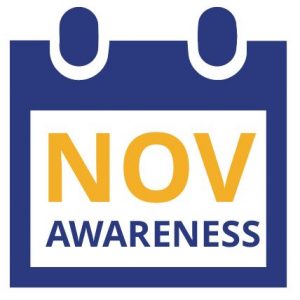
Sleep deprivation in the public sector can have significant negative consequences. It can have serious and wide-ranging health and safety risks. Some of the major risks associated with chronic sleep deprivation include:
- Cognitive Impairment: Sleep deprivation can lead to difficulties with concentration, memory, problem-solving, and decision-making.
- Mood Disturbances: It often results in irritability, mood swings, increased stress, and a higher risk of developing mood disorders like depression and anxiety.
- Weakened Immune System: Lack of sleep can compromise the immune system, making individuals more susceptible to illnesses and infections.
- Cardiovascular Issues: Chronic sleep deprivation has been linked to an increased risk of heart disease, high blood pressure, and stroke.
- Weight Gain and Obesity: It can disrupt the balance of hunger hormones, leading to overeating and weight gain.
- Diabetes: Sleep deprivation is associated with and increased risk of developing type 2 diabetes.
- Reduced Motor Skills: Impaired coordination and motor skills can lead to accidents and injuries, both at home and in the workplace.
- Microsleeps: Brief episodes of sleep that can occur when you are sleep-deprived, often without your awareness. They can be dangerous, especially when driving.
- Hallucinations: Severe sleep deprivation can lead to hallucinations and psychosis.
- Increased Risk of Accidents: Drowsy driving and workplace accidents are more likely when people are sleep-deprived.
- Hormonal Imbalance: It can disrupt the balance of hormones in the body, affecting growth, stress, and reproductive hormones.
- Long-term Health Consequences: Chronic sleep deprivation is associated with a higher risk of chronic health conditions such as obesity, heart disease, and even certain cancers.
It is crucial for employees to prioritize and improve their sleep quality to mitigate these risks and maintain overall health and well-being. If sleep deprivation is persistent or severe employees should seek medical advice.
Public sector employers need to be aware of employees with sleep deprivation and promote a healthy work-life balance.
Employers should know what to look for in sleep deprivation, below are common signs and symptoms (beware that signs and symptoms can vary in severity).
- Fatigue and excessive daytime sleepiness.
- Difficulty concentrating and memory problems.
- Irritability and mood swings.
- Reduced ability to handle stress.
- Increased appetite and weight gain.
- Impaired motor skills and concentration.
- Frequent headaches
- Reduced immune functions, making you more susceptible to illnesses.
- Hallucinations or microsleeps (brief, unintentional periods of sleep).
- Increased risk of accidents, including drowsy driving.
If you or one of your employees are experiencing any of the symptoms listed above, improving sleep hygiene may help, if necessary, seek medical advice.

Download the recently added Hot Work Safety Procedures or Brush Pile Burning Safety Procedures to incorporate into your safety manuals.
Member Highlight: City of Milford
Location: Dickinson County
Population: 3,321
Employees: Approximately 40 employees including part-time and volunteer fire department.
Operations: Public Works, Police, Park and Recreation, Library, Airport, Administration and Volunteer Fire Department.
Agent: M-H-R Insurance, Russell Beckendorf

IMWCA staff recently met with LeAnn Reinsbach, City Administrator /Clerk for the city of Milford to discuss the city’s safety efforts.
What is your city doing to provide a safe workplace?
The city has a monthly safety meeting with the SHIELD Committee Safety Director Michael Raner. The SHIELD Group is a 28E agreement within the Iowa Planning Region 3 that wants to actively participate in this program. The meetings include reviewing incident reports, ongoing training and ways to prevent increasing the number of days in lost time when accidents occur. The city also performs Safety Audits to ensure the work areas are as safe as possible.
Do you have a designated provider and a Return-To-Work Policy?
The city has a designated provider and an up-to-date return-to-work policy to assist with managing our claims.
What words of wisdom do you have for other members of IMWCA to help them develop their safety culture?
The most important aspect is having the employees work as a team and always look after each other and practice what you preach.

There are several awareness months celebrated in November. Here are important reminders and helpful tips to keep your employees safe and healthy.
Pancreatic Cancer Awareness Month
November is Pancreatic Cancer Awareness Month, so what better time to be reminded of the common carcinogens you may encounter while at work?
The ten most common carcinogens you may be exposed to in the workplace include:
- Asbestos
- Benzene
- Cadmium
- Chromium
- Crystalline Silica
- Formaldehyde
- Ionizing radiation
- Lead
- Nickel
- Wood Dust
If you are unsure about whether a substance is a carcinogen or not, refer to the SDS sheet which is required to indicate the carcinogenic risk. If you have a known risk of exposure, it is important to identify potential health risks and assess the extent of your exposure. You should determine how often and in what quantities you are being exposed. If the exposure is a cause for concern, it is worth exploring possible solutions. There are many new ways of completing job tasks with a more hands-off approach than what was available in the past. These options can significantly reduce or in some cases even eliminate your exposure. If total elimination is not an option ensure you have access to the appropriate PPE and have a policy for use.
Find more information on carcinogens and OSHA’s tools.
Lung Cancer Awareness Month
As November is Lung Cancer Awareness Month, it’s a great time to review your Respiratory Protection plan.
Although lung cancer is the primary cause of cancer-related deaths in the US, there are several other lung conditions that can result from exposure to hazardous substances in the workplace. To ensure the safety of our employees from smoke, fumes, and dust, it is important that employers establish and implement a respiratory protection plan that consists of three parts:
- Identification of exposures to hazardous airborne substances or environments. This includes fumes from welding, dust from concrete sawing, smoke during firefighting or chlorine gas and other airborne exposures. Hazardous environments include the presence of hydrogen sulfide or an oxygen deficient atmosphere.
- The selection of respirators should include a qualified team who can determine the appropriate respirators for the hazard.
- It is important to ensure that anyone who will use a respirator is medically qualified to do so safely and has undergone a fit-testing. Even a paper N95 respirator can place added stress on the cardiopulmonary system, making it crucial for the wearer to be medically cleared. Fit-testing is also important to guarantee a good seal on the face, which helps prevent inflow.
IMWCA has a model Respiratory Protection Plan on our website to get anyone started.




